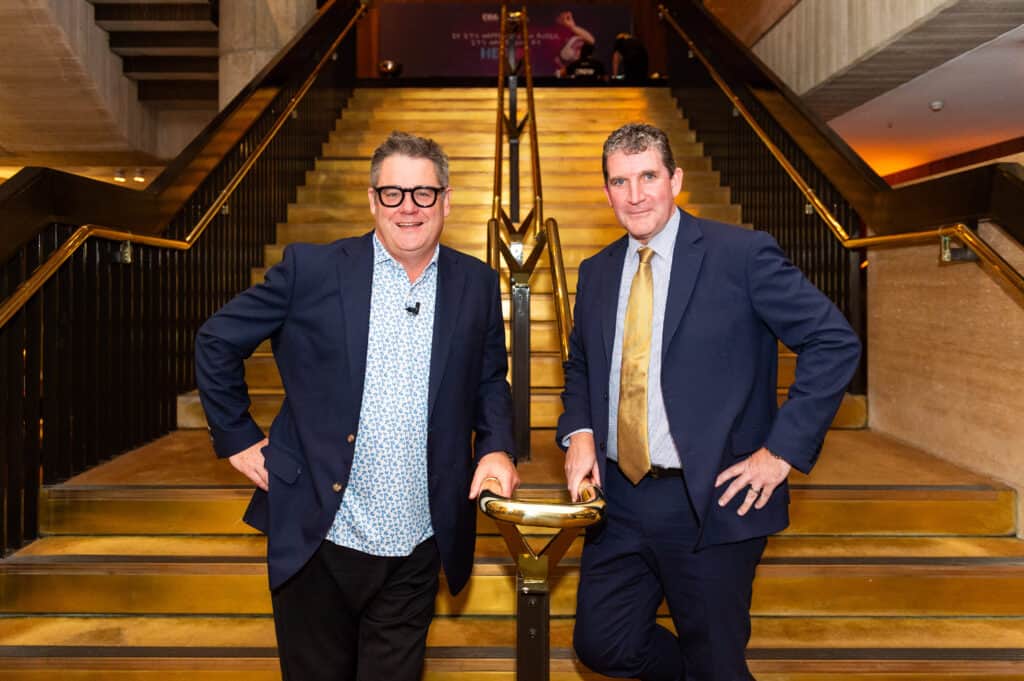Investing “just 11%” of a campaign’s budget in radio can double its effectiveness, according to new findings revealed by Mark Ritson at yesterday’s Commercial Radio & Audio (CRA) conference, HEARD 2024.
“Nobody fucks with Batman,” he began, proceeding to make a case that all superheroes need their trusty sidekicks to succeed – and the same is true in the media mix. “Radio is the ultimate media sidekick,” he concluded, making all other media work better.
“Radio has been underrated in maximising the overall impact of your marketing,” Ritson said. “For the best bang-for-buck, marketers should consider radio as an integral part of the channel mix – and an 11% investment can double your campaign’s impact.”
Ritson, who is notorious throughout the marketing and advertising industry for his strong opinions, collaborated with CRA on a study which analysed the Advertising Council of Australia’s Effectiveness Database – made up of Effie Award entries from 2018 to 2023 – to determine how the allocation of radio advertising budgets impacted the success of a campaign in terms of commercial outcomes for clients.
He told Mediaweek after his presentation that when CRA first approached him to present at the conference, he said no. But he’d always had a hunch that radio drove a “disproportionately large impact”, and he saw an opportunity to prove it. So he asked CRA to fund the research, performed alongside renowned marketing researcher and consultant Rob Brittain. The pair began the research in October.
If his hypothesis was proven, he agreed he would present it at HEARD. When asked why such research hadn’t been conducted before now, Ritson told Mediaweek: “I don’t think the radio guys had thought about it yet.”
“I don’t want to sound like a primadonna. This was my idea. I brought it to them. Usually when you get an industry body, it’s like, ‘we want you to prove blah, blah, blah’. This time around, [I was saying] ‘I think of radio as a sidekick, let’s find out if it’s true.’
“And good on them, for going, first of all, ‘yeah, let’s find out’ and second, when it comes back to being 11%, being comfortable with that. Not being the star of the show at their own event.”
In fact, Ritson was shocked at just how impressive the results were: “It’s up the upper threshold of what it should be.” But he isn’t naive about the action most media buyers and clients will – or won’t – take in response to the research.
“I don’t think most of them will,” he said, regarding how many blue-chip clients would go on to spend 11% of their budgets on radio now they know they should. “It’s in inches. The good thing about radio is we only need inches to have a massive impact.
“The trick here is try that 11% for five years, 10 years, with different but the same message … So you could just repeat this talk next year.”
Ritson wants to see more emotional advertising – it works better than rational messaging, and better than emotional and rational messaging sitting together. Emotion, pure emotion, wins. But the shortening of CMO and client-agency tenures make it difficult to build emotional and enduring brand platforms.
“What happens in Australia is we have a bunch of shithouse CMOs, who get found out within 12 to 18 months [for] not only being no good at being a C but actually no good at M, right. But there’s another bunch, who are absolutely phenomenal, who are in that role for eight, nine years.”
Emotional work doesn’t have to be heartwarming or heart-wrenching. Agencies and clients need to return to “dirty, old-fashioned bogan humour”, according to Ritson. “I think we can’t have too much of that.” A modern-day Paul Hogan is what he wants.
“The larrikin thing. I want to see more of that in advertising … And not an American or British form of humour either, proper Aussie larrikin humour that isn’t sexist and isn’t racist, but it’s still larrikin, I think is absolutely what we’re missing.”

Ritson and Davis
On the results of the research Ritson presented to end the conference, Ciaran Davis added that advertisers not spending on radio are surrendering an opportunity to maximise their return on investment (ROI).
“Radio and audio deliver the best bang for your advertising buck. That is why we’ve seen our industry remain steady despite the challenging conditions over the past 12 months,” the chairman of CRA and chief executive and managing director of ARN Media said.
“If advertisers aren’t thinking about investing in radio, then they’re missing a significant opportunity to drive ROI for their business.”
Also at HEARD, Thinkerbell founder and consumer psychologist Adam Ferrier hosted an immersive experience that explored the impact of audio on emotion. For the first ten minutes of the presentation, Ferrier was not on stage, speaking with the lights dimmed and the screens turned off to prove the emotional impact of audio. He had audience members look into each other’s eyes as he played music, and women look at men in the room while Julia Gillard’s infamous misogyny speech played.
Plus Analytic Partners managing director Paul Sinkinson spoke on radio’s ability to improve return on investment when used in brand campaigns.
See also: Mark Ritson is appointed to the board of directors of Lakeba Group Board
